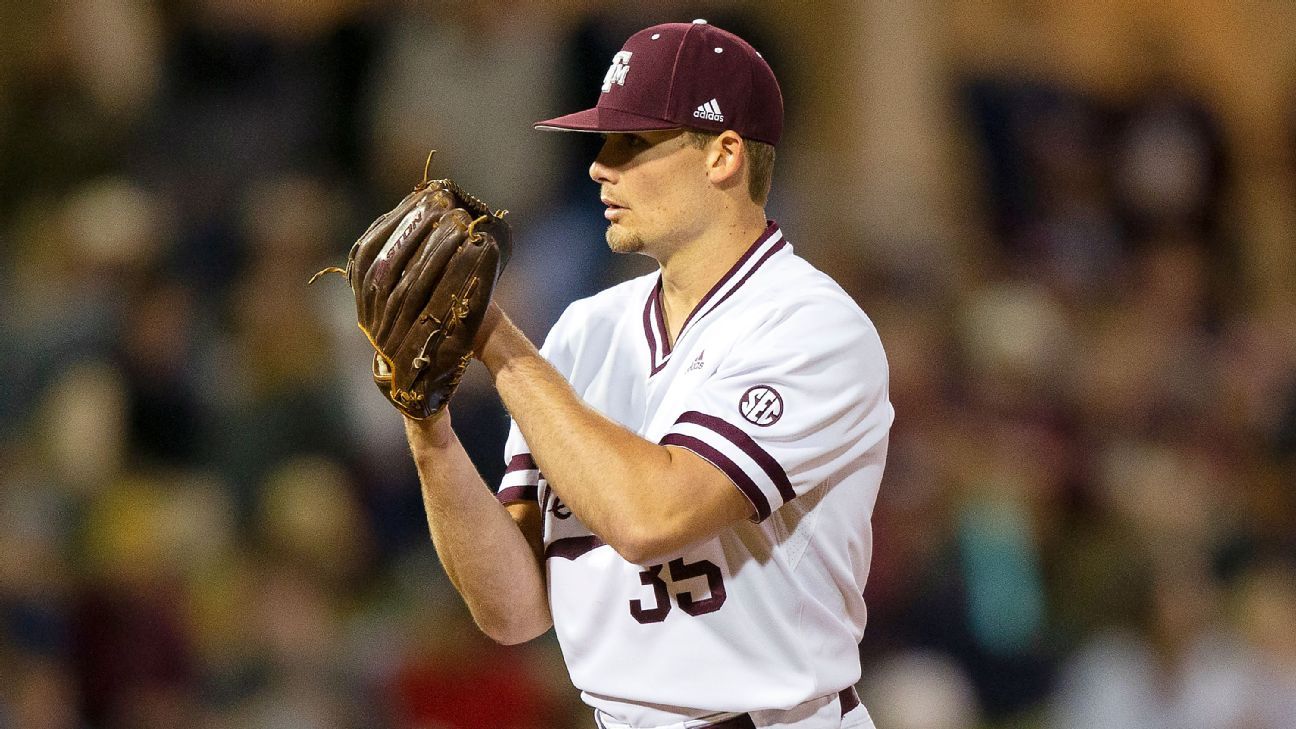Now that we are within 30 days of the 2020 MLB Draft and intel leaking out of pre-draft meetings and conversations with agents has reached a tipping point, it’s time for my first stab at projecting the first round. To be clear, this is my attempt at projecting what teams will do on June 10, while my rankings (which will be updated again soon) are the order in which I’d take the players, absent bonus demands.
I have another piece on the way that breaks down my full analysis on the changes to the draft, but bonus demands and the general chaos in the industry right now have scouts, executives and agents scrambling to figure out what this will mean on draft day. The short version is that teams seem inclined to play it safe, leaning to known college talents that they were able to see this spring, the past summer and in the 2019 spring, and clubs are also inclined to go for savings in the first round when it isn’t clear who the best available prospect is.
High school players are hurt by this because many hadn’t even started their spring season, there’s little if any spring data for clubs to plug into draft models, they didn’t face top-notch competition and their bonus demands probably haven’t changed much since the draft rules were changed. Clubs have to pay only $100,000 of any bonus this year, with 50% of what’s remaining paid in the summer of 2021 and the rest in the summer of 2022. College players generally don’t want to go back to school as a 22-year-old, senior-aged prospect who will have less leverage, take a discount in the 2021 draft and delay free agency another year, while high school players can go to school and come out again in a draft where there aren’t deferrals on bonuses, after a couple of years to raise their draft stock.
This means prep players who don’t have multiple clubs hot on their trail or a long track record might get their bonus but at a later pick, and others will just get pushed down far enough that the money runs out and they end up going to school. Generally speaking, the first round or two should skew toward underslot picks, college players and those with a long track record or data. I’ll reference it at specific picks below, but these types of forces are in play at nearly every pick.
It’s still too early to have reliable intel on multiple preferences for every one of these picks, but teams have told me they don’t have that yet, either. This is made much more difficult by not being able to scout which teams are at which games, so I’ll be relying more heavily on teams telegraphing some interest to advisors, and it’s still a bit early for that to be widespread.
![]() Click here for full scouting reports on this year’s top 50 draft prospects
Click here for full scouting reports on this year’s top 50 draft prospects
